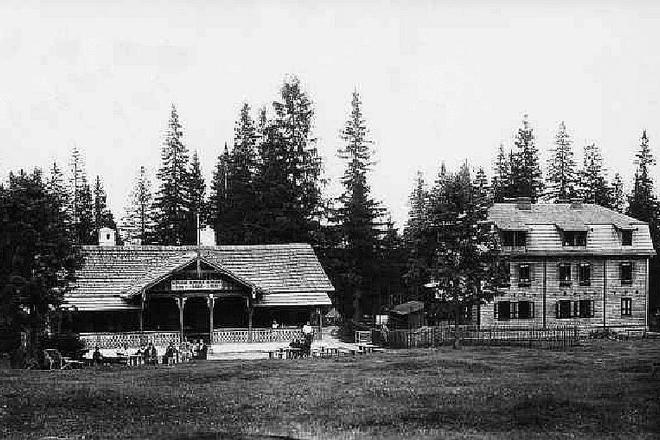ONE OF the smaller tourist resorts in the High Tatras, Kežmarské Žľaby (Kežmarok Gullies), was built on a large meadow near the brook called Biela voda (White Water). Originally, a smugglers’ road led through the meadow to Poland, serving to transport all kinds of goods across the border, especially horses.
A shepherd's hut was the first building erected here by the Kežmarok municipality. It was soon followed by a gamekeeper's lodge and then cattle troughs.
A watershed in the development of the tourist resort in Kežmarské Žľaby was in 1888 when an inn with two rooms and nine beds was opened. Unlike many other hotels in the region, accommodation was available here in the winter season as many guests came on sleigh from nearby Tatranské Mlynčeky, lying only 6 kilometres away.
In this interesting postcard dating from 1928, the inn is depicted on the left side and another tourist house, built in 1921, can be seen on the right.
The inn was closed after a fire in 1933 but a new restaurant and a guest house had already been opened.
Kežmarské Žľaby has remained almost unchanged since then and has preserved its authentic atmosphere, just like a number of other High Tatras resorts.


